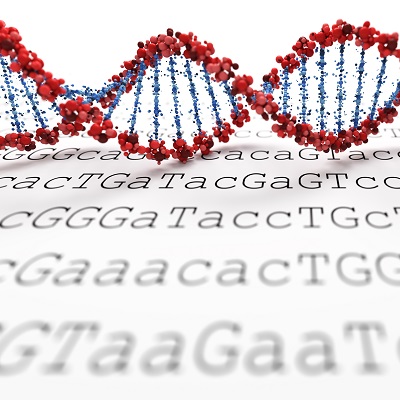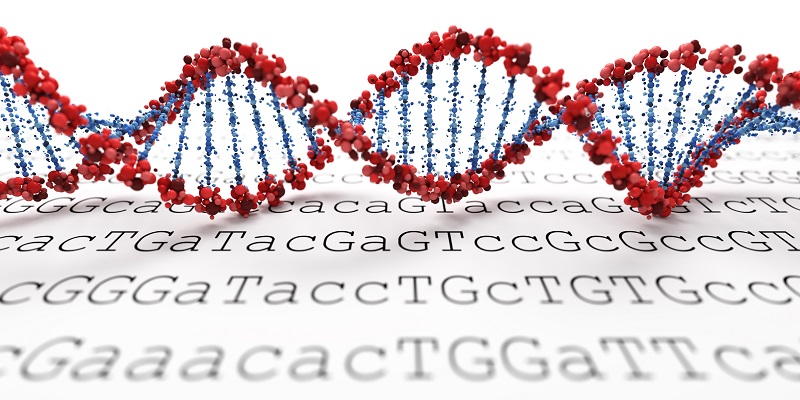Genome editing: CRISPR-Cas9
- 31st August 2018
- Posted by: Claudine Gabriele
- Category: Articles

The ability to change an organism’s DNA – whether it’s a plant or an animal – is called genome editing. The DNA changes can be sections of DNA being added, removed, or changed in some other way at specific points on a gene.
There are numerous methods that can be used to edit DNA, causing breaks in the strands at the desired locations. One of those methods is the CRISPR-Cas9 system.
CRISPR
CRISPR is one of the best-known methods of genome editing, and was selected as the 2015 Breakthrough of the Year by the journal Science. Clustered Regularly Interspaced Short Palindromic Repeats are part of a family of DNA sequences that are found in prokaryotes such as bacteria and archaea. Their palindromic nature means that the sequence of nucleotides is the same when read in either direction. Next to the palindromic sequences are small groups of cas genes (CRISPR-associated genes), which gives rise to the CRISPR/Cas system name. CRISPR/Cas acts as an aquired immune system in bacteria and prevents infection from ‘foreign’ nucleic acids. The Cas proteins help to cut DNA strands of incoming viruses, disabling them and protecting the cell.
CRISPR-Cas9
For CRISPR-Cas9, it is the CRISPR-associated protein 9 that is used. The CRISPR-Cas9 system was first successfully used for genome editing in 2013, and is regarded as a faster and more accurate method than other genome editing techniques.
In a lab setting, guide RNA is needed to work alongside the Cas9 proteins. The guide RNA binds to the targeted sequence of DNA as well as to the Cas9 protein, and the Cas9 protein cuts the DNA at the targeted section. The guide RNA is then used to add new sections of DNA into the existing strands.
Benefits of genome editing
Genome editing has many benefits. The genetic causes of diseases can be explored and there is potential for genetic treatment or preventions to be developed. The technology is being explored for applications as treatment for HIV, haemophilia and cancer therapies for example.
Editing genomes could also allow for genetic diseases such as cystic fibrosis to have a cure in the future. For more complex diseases, where more than one gene is involved to cause symptoms, editing genes could help reduce the risk of contracting that disease as well.
Additionally, the CRISPR-Cas9 system can be used on a wide variety of organisms – including plants. Rice is susceptible to bacterial blight, and through genomic editing can have resistance conferred. This ensures that a staple food for many areas of the world is not repeatedly damaged by the same infection, and that food availability is not diminished.
Concerns
Concerns do arise from genomic editing however, in relation to safety and ethical considerations.
A recent study in Nature Biotechnology found off-target DNA damage – where there is damage from the CRISPR system in areas other that the main DNA target location – is more common than researchers previously thought. The regions of DNA that are most-often checked for off-target damage tend to be near to the specified target site. The new study looked at much larger stretches of the genome, and there were changes through deletion or rearrangement far from where CRISPR-Cas9 should have targeted. There are many versions of CRISPR genome editing however and this study investigated one way that CRISPR can be used. The issues that arose through this study may not necessarily be common for other methods of CRISPR editing.
With genome editing overall, whether through CRISPR-Cas9 or other techniques, the ethical concerns surround whether changes are made to somatic cells or germ cells. Somatic cells are general cells that are not to do with reproduction whereas germ cells in humans are the sperm or egg cells. Changes to germ cells can be passed on to new generations.
In the UK, somatic cells are able to be used in research under regulation by the Human Tissue Authority. The editing of germ cells is only allowed in research contexts and prohibited in a clinical context. For research, it must have rigorous scientific and ethical reviews by the Human Fertilisation and Embryology Authority to be conducted.
Further information
Bioinformatics solutions for CRISPR research
What are genome editing and CRISPR-Cas9?
CRISPR-Cas Encoding of a Digital Movie Into the Genomes of a Population of Living Bacteria
Did CRISPR really fix a genetic mutation in these human embryos?
Leave a Reply
You must be logged in to post a comment.


